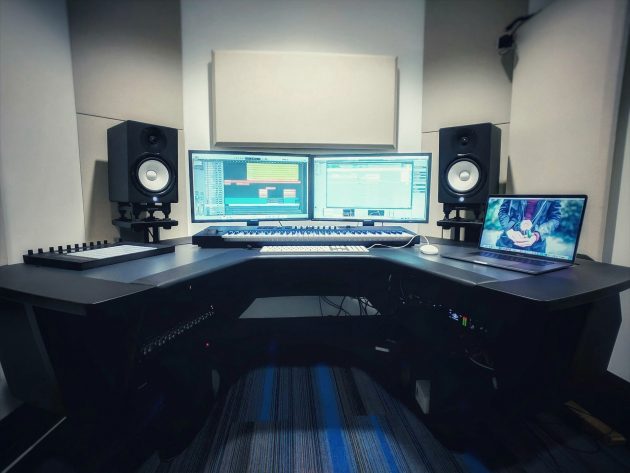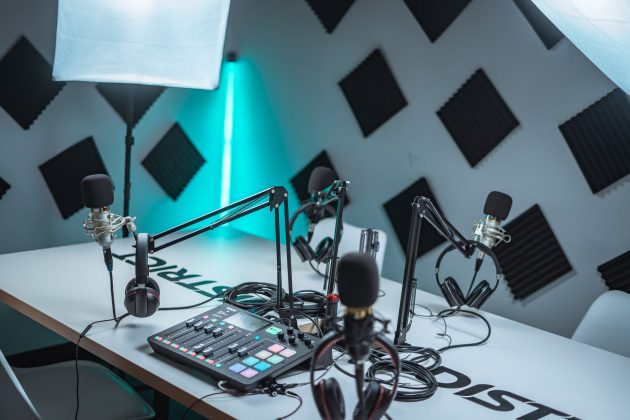When it comes to the task of alleviating background noise and reducing the reverberation and echo in a space, installing acoustic panels becomes necessary. Acoustic panels are boards that are wrapped with sound-absorbing fabric. So if you are looking for a solution to counter acoustic problems in your studio, living room, office, or meeting room, setting up acoustic panels in those areas can serve you pretty well.
However, you might get a little confused about where you should be placing the acoustic panels to avail the desired space with maximum soundproofing. And if you are reading this, we are sure that you are looking out for an answer to that question. Well, you can rest assured as here we will be throwing light on that matter so that placing acoustic panels in your desired spaces would serve in your very best interests.
Installing acoustic panels in the right places can fetch the studio or room with the right acoustic properties. It can optimally soundproof your desired space. But one thing that you must always take care of is their placement.

Front and Back Walls
Putting acoustic panels on the front and back walls is another great option that facilitates noise reduction. If you intend to put acoustic panels on the front and back walls all you need to ensure is to match them up in a way that they can absorb sound which is traveling between the front and the back.
Another thing that you must consider while putting acoustic panels on the front and back walls is to place them at the same height. A leveling tool can aid you pretty well in doing so.
Behind the monitors
Well, this has to be one of the prime places where setting up the acoustic panels can be beneficial. The wall that is behind the monitors gets the sound reflected which in turn affects the speakers. Installing acoustic panels in such a place helps in absorbing the sound; along with mitigating any unnecessary sound reflection.
If your studio monitors have bass ports, the above-mentioned acoustic panel placement can be immensely beneficial. But it would also serve you well even if your studio monitor doesn’t have bass ports.
Where two surfaces meet
If you have a home recording studio, you also have the option of soundproofing it by placing acoustic panels in areas where two surfaces meet. So in your home recording studio, you would be installing the acoustic panels on the four corners. This will enable you to prevent sound from going in and out of your home recording studio through the corners. Acoustic panels block outside noise as well as inside noise.
If you put acoustic panels on areas where two surfaces meet, it helps in absorbing more of the lower frequencies. This in turn will aid you in recording musical instruments that give a basal touch like a bass guitar, or double bass.
If you choose to install the acoustic panels in areas where two surfaces meet, you must leave some space in between the panel and the corner. However, if you are using acoustic foam as well, you can curve it to fit on both walls. This will help you significantly if you don’t intend to use bass traps. It will also serve you to perfect the acoustic treatment of your home studio.
Rear Sidewalls
If you leave the walls at the back of your studio open, they might cause a flutter echo. Flutter echo occurs when sound energy gets trapped between the walls and moves back and forth. When you put acoustic panels on rear sidewalls, it enables you to reduce or even eliminate the occurrence of a flutter echo.
This is because when you put acoustic panels on the rear sidewalls they absorb more sound as compared to a setup where acoustic panels are placed just on the corners. This further facilitates greater noise reduction.
The number of acoustic panels that you should ideally install on the rear sidewalls of your home studio depends on the sound quality that you want to have.
Throughout the Room
Last but not the least, putting acoustic panels throughout the room can take the soundproofing of your room to the next level. Here, all you need to do is to cover the walls of the room as equally as possible. Their uniform placement would enable you to restrict the sound from both coming in and going out.
Performing a clap test in such a scenario is also of great use. To do so, you would be required to walk around the room clapping your hands as loud as possible. Now pay close attention to the vibrations that return. If your acoustic panels are properly placed, the sound won’t be ringing or metallic.
However, if that happens, it simply means that adding more acoustic panels is required. Again, this depends on your decision on how you want your home studio to sound. If you wish to have less of a ringing sound, consider enhancing your acoustic panel placement.
Final Thoughts
We are pretty sure that this post would have guided you well regarding where you must place your acoustic panels.
You must also consider that when it comes to acoustically setting up a room, it doesn’t need to be a cumbersome process, rather it should be a fluid one. And once you get that job done, the soundproofing of your desired space would be perfectly fine.















